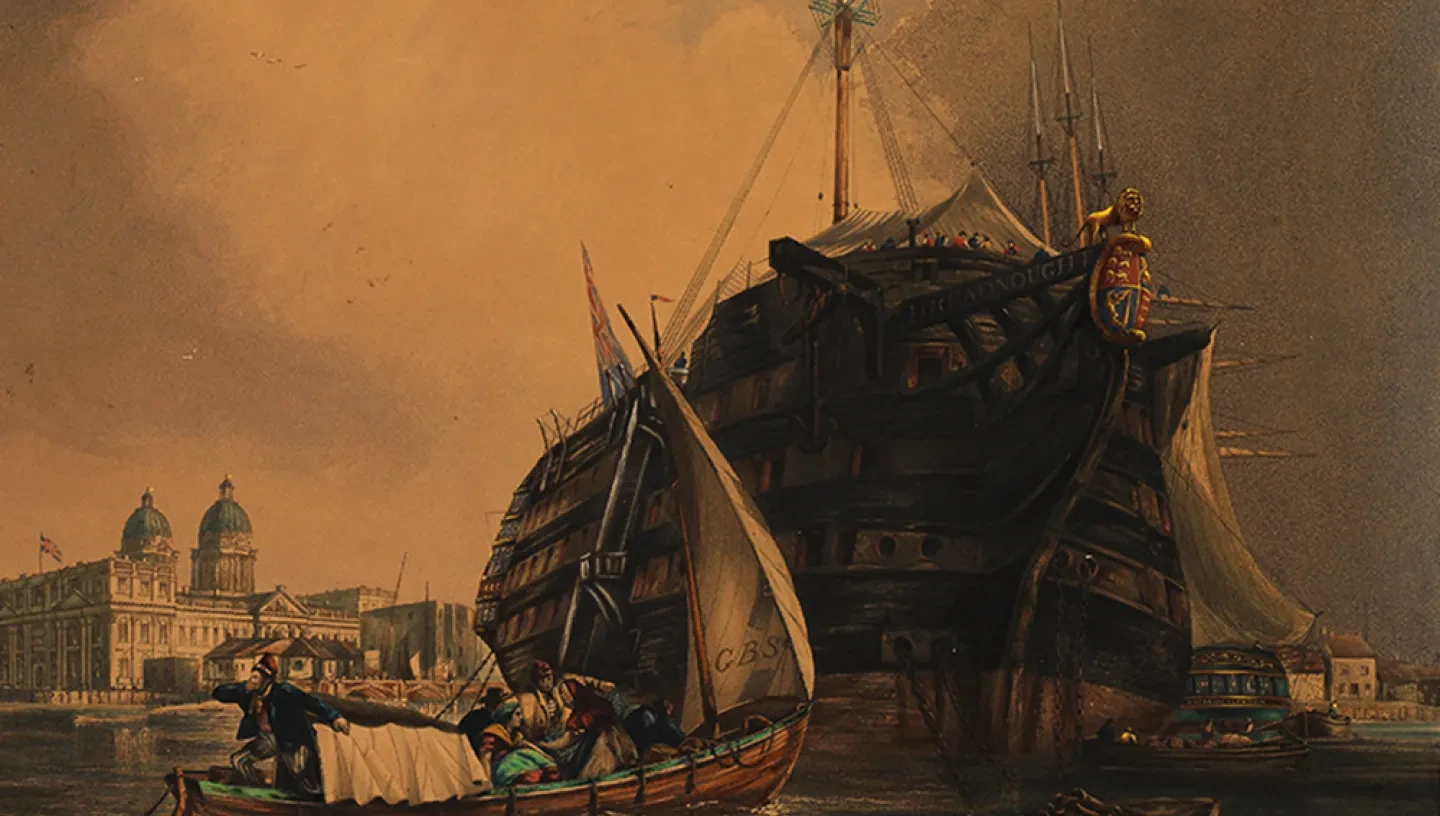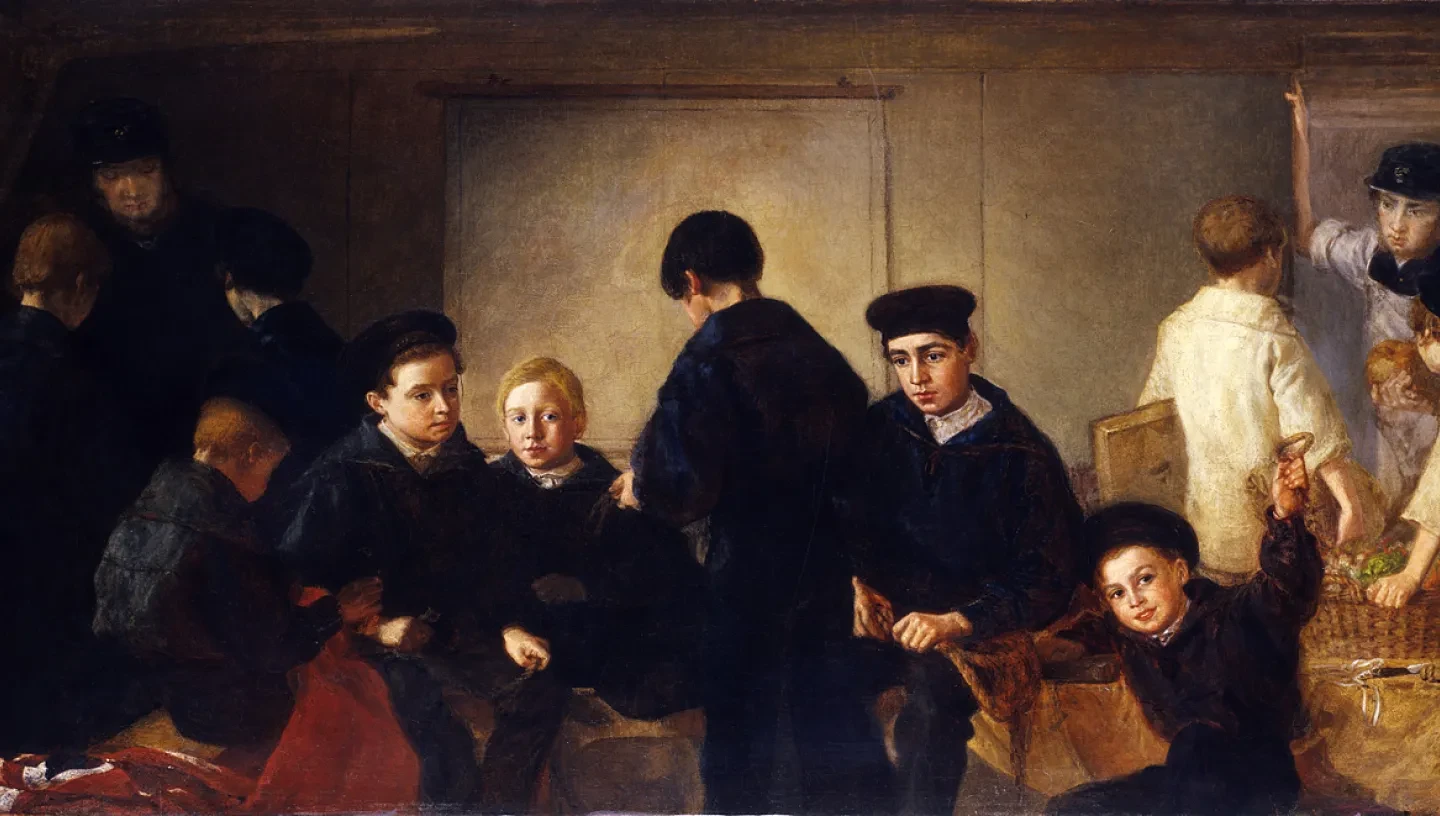
Discover just some of the stories recently discovered in the medical records of the Dreadnought Seamen's Hospital.
In 2021 the Caird Library and Archive launched our archival transcription project HMS NHS: The Nautical Health Service to transcribe the records of the Greenwich-based Dreadnought Seamen’s Hospital.
The hospital was the main clinical site of the Seamen’s Hospital Society (now Seafarer’s Hospital Society), founded to bring relief to sick and injured seafarers of all nations.
Traditionally used by family historians to trace individual maritime ancestors, the records also have significant research value, including the history of medicine and diseases and the evolution in treatment of specific illnesses within the maritime workforce. They also show which illnesses were most prevalent in seaman returning from specific parts of the world, together with an almost unlimited number of case studies for examining how far medical theory applied at sea. Together these records show the extent of disease, injuries and common ailments in the merchant navy for over a hundred years.
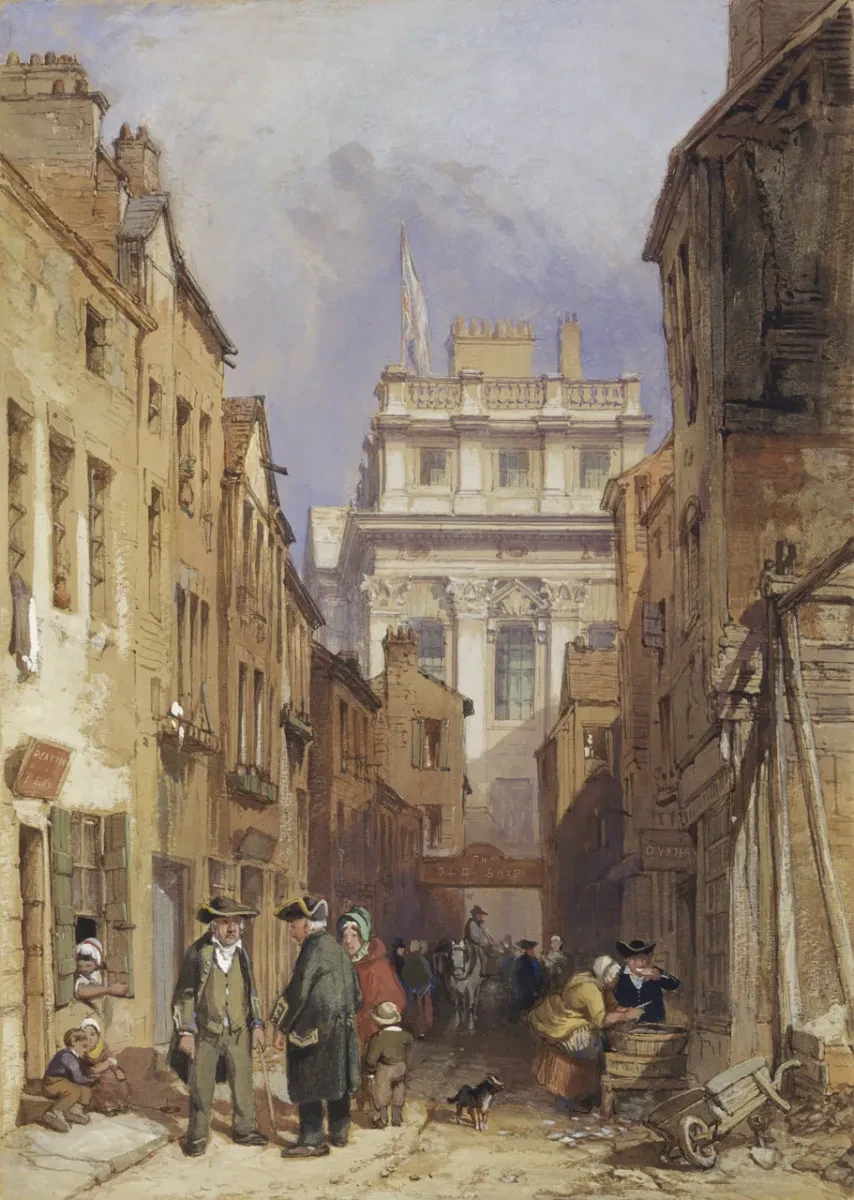
'Born outside hospital gates'
In May 1880 a woman named Anne Buckley was admitted. She was discharged to the Greenwich Union Workhouse four days later.
The entry below her states, ‘Child of the above, born outside hospital gates in the road’. On arrival, Dr Smith remarked that their admission was ‘not usual practice’ – but at least did not turn them away.
Further volunteer research in local newspapers revealed the child was also christened Annie.
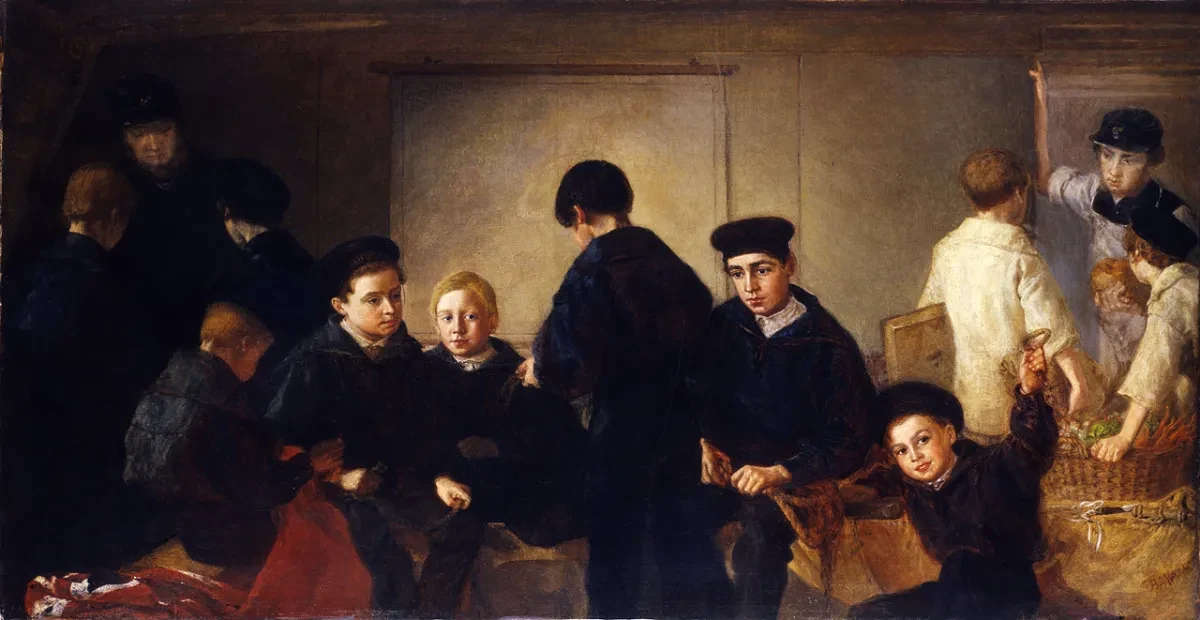
A first sight of change
In October 1872, three whole pages of records referred to the cases of approximately 75 boys from the Goliath, a training ship for workhouse boys. They had all been admitted with ophthalmia.
Ophthalmia was a contagious eye infection resulting in redness, swelling and irritation under the eye lids. Untreated it can cause blindness.
Most of the boys were discharged six to eight weeks later, though some stayed as long as three months.
Volunteer research ascertained that this was part of s wider epidemic that affected many London workhouse schools. One of the more positive outcomes was the establishment of modern Ophthalmology: the study of eye complaints and disease in their own right.
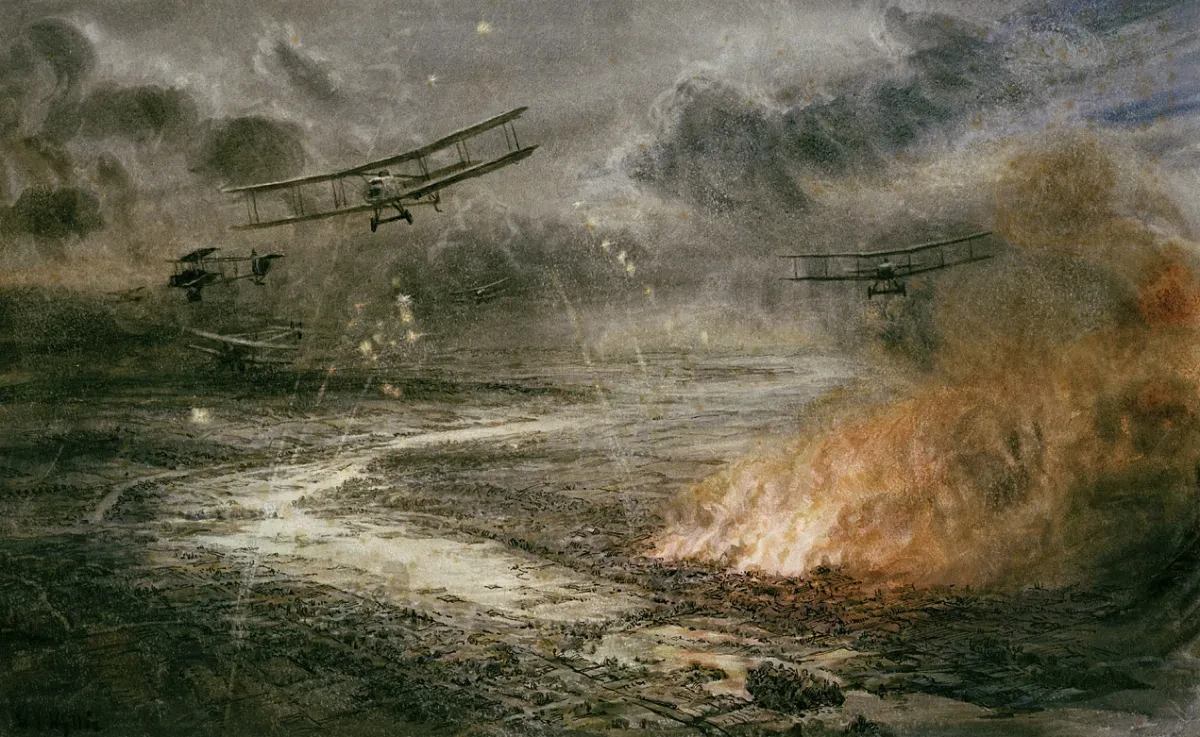
Greenwich and the First World War
The records continue to produce local stories of international significance.
In October 1914, the first of many entire pages of soldiers wounded in the trenches of the Western Front begin to appear. Almost all are bullet and shrapnel wounds to the limbs – one volunteer pointed out that the more severely wounded would probably not have been transported back to the Dreadnought for treatment...
